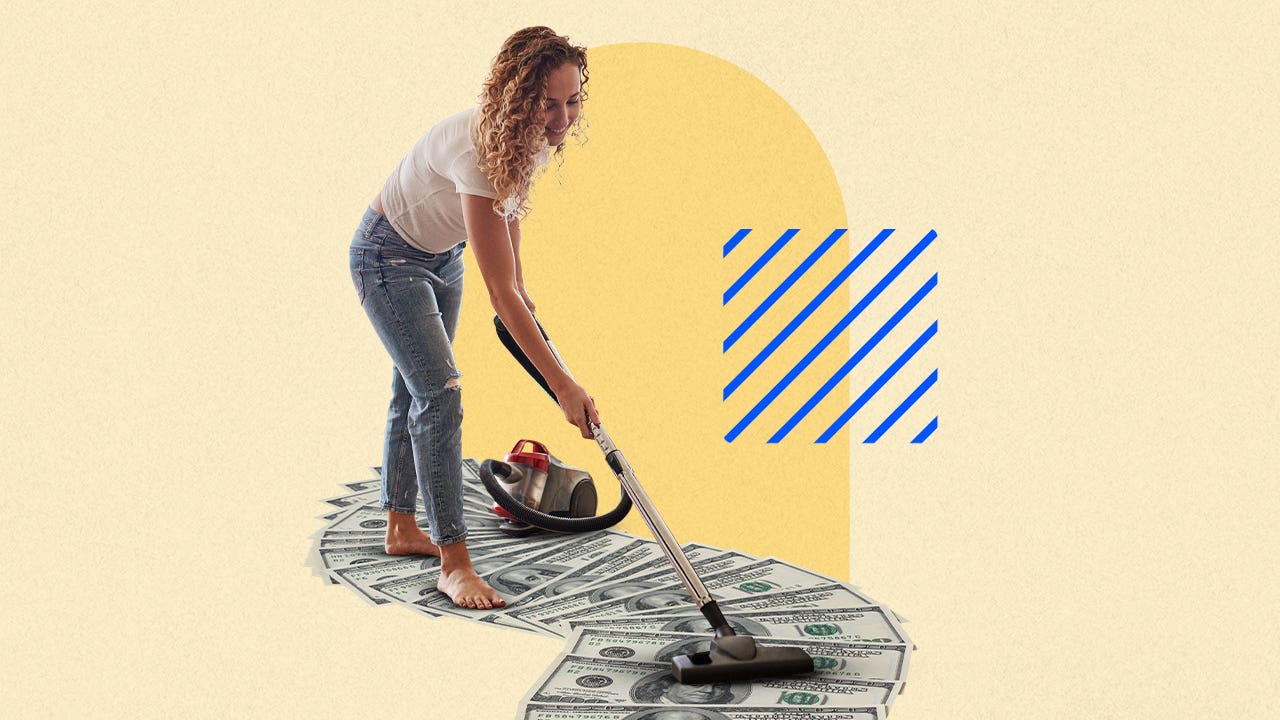Financial spring cleaning checklist: 12 ways to boost your savings

The Bankrate promise
At Bankrate we strive to help you make smarter financial decisions. While we adhere to strict , this post may contain references to products from our partners. Here's an explanation for .
Spring is a time of growth and renewal, making it the ideal time to give your finances a little sprucing up. Take a moment to sit down and check in with your bank account and budget to see where you can make room for improvements or adjust your spending in certain areas for saving more.
Here are 12 steps you can take to reorganize your finances and boost your savings.
1. Set or revisit savings goals
Identifying clear and realistic savings goals is one of the first steps you should take to maximize your savings. Without an idea of what you’re saving toward, it can be easy to spend quickly and fall short of what you need to put away to meet your goals.
If you haven’t done so already, write out your goals and determine how much money you’ll need to set aside each month to achieve them, factoring it into your budget. It’s also important to revisit these goals periodically as your financial situation changes.
2. Automate your savings
Setting up automatic transfers from a checking account to a savings account can help you save more without having to think about it. Many bank accounts and apps allow you to designate either a fixed amount or a percentage to be transferred regularly from your checking account each month. Or, you can set up a split direct deposit so a portion of your paycheck will go into savings each payday.
3. Use a savings app
Not only are savings apps a good way to automate savings, they can also take care of some of the legwork involved in tracking spending, making a budget and paying down debt. Many of these apps analyze your spending habits and offer personalized recommendations for where you can cut down on spending and how much you can automatically transfer to a savings account each month. Some, like Digit, even provide annual savings bonuses that you can use to pad your savings fund.
4. Bundle your insurance
While you’re doing a financial deep clean, it might be a good idea to review your insurance policies to make sure you’re not overpaying. Bundling different types of insurance, such as home and auto insurance, with the same provider can often give you a discount. This can help you save on insurance premiums and reduce overall expenditure.
5. Review your credit report
You have the right to order one free credit report a year, and with sites like AnnualCreditReport.com, you can often review your credit report online for free more frequently. Looking for errors on your credit report not only ensures your identity is protected but can also help you save in the long run: If an error is negatively impacting your credit score, you might be getting charged higher interest rates on loans and credit cards than you should be.
The Consumer Financial Protection Bureau (CFPB) recommends looking out for the following common credit report errors:
- Identity errors, such as an incorrect name or address
- Incorrect reporting of your account status, such as an account incorrectly labeled as delinquent
- Data management errors, including accounts listed multiple times with different creditors
- Balance errors
6. Address high-interest debt
Credit card interest rates have been increasing in recent years, and the average credit card rate is 20.24 percent APR, according to Bankrate data. The higher the rate on your credit card, the more entrenched your debt will become, sometimes resulting in debt multiple times more than what you originally borrowed.
Focus on paying off debt with the highest interest rate first, without neglecting minimum payments on other debts. You could also consider some options to lower your interest rate, such as by consolidating debt.
7. Use a balance transfer
Another option for reducing your debt is to use a balance transfer credit card. A balance transfer can help you save on interest charges by transferring high-interest credit card debt to a credit card with a lower interest rate or one that has an introductory 0 percent APR, allowing you some time to pay down debt without incurring more interest charges.
8. Cut back on dining out
The average household spends over $3,000 annually on food away from home, according to 2021 Bureau of Labor Statistics data. One step you can take to cut back on dining out expenses is to start by dining out a couple of days less each month and preparing meals at home instead. Then, the money you saved by eating at home can go toward your savings.
9. Sell unused items
There’s a good chance you’ve got some items lying around that you don’t use, such as clothing or electronics. Selling these items is a great way to both declutter your living space and provide yourself with some extra income. Consider having a springtime yard sale or selling on an online marketplace.
10. Use cashback rewards
Many credit cards come with cashback rewards, which can be redeemed for cash or applied to certain expenses. You can use a travel credit card, for example, to earn travel rewards points and apply them toward travel expenses, like plane tickets.
But you don’t necessarily need to open a credit card to take advantage of cashback features — a number of banks also offer debit cards that give you cash back, such as Varo Bank’s debit card, which earns cash back on approved purchases.
11. Cancel unnecessary subscriptions
Take a moment to review your recurring subscriptions. Because subscription-based services are charged automatically each month or year, they’re easy to forget about, causing you to incur costs that you may no longer be benefiting from. You could go through your monthly bank account statement or use an app, like Rocket Money, to identify all of your recurring subscriptions and determine which ones you can cancel.
12. Shop around for a better savings rate
Though many consumers stick to the same bank account for the sake of familiarity or convenience, if you’ve had the same savings account for a while, you could be missing out on a much higher payout.
The average savings account yield is 0.24 percent APY as of May 5, 2023, according to Bankrate’s weekly survey of bank accounts. But some of the best savings accounts are paying nearly 20 times as much right now, with rates of nearly 5 percent APY. Compare a few different savings accounts and consider switching to one that will pay you more while charging fewer or no fees.
As you follow the steps outlined above and slowly but steadily increase your savings contributions, you can put those contributions into an account that will also pay you more based on your balance, increasing your savings twofold.
Related Articles

Worried about a potential recession? Here’s 9 steps to prepare your finances now

12 ways to bank smarter: Simple tips and tricks to increase your wealth

